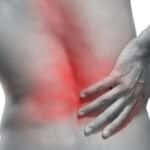I had a recent patient where the doctor recommended a lateral release surgery to the knee. This patient did not want to have surgery but they were at odds as to what to do. They had tried ART and cupping without success. This patient had been hurting for 8 months and was unable to play tennis and now was starting to give them problems with running and working out. There was no mention from the doctor to try physical therapy he went straight to the surgery route.
I often hear this all the time.
“My MRI does not look good. It shows I have a meniscal tear, hopefully surgery will fix this? Then I can get back to the activities that I love doing”
Or “My back has been bothering me for years. I went to get an MRI and it shows degenerative changes, or a herniated disc so they recommend an injection or surgery. Hopefully this will end my pain.”
Have you had this happen to you? It is really common. Most patients do not get referred to physical therapy especially when it comes to back pain. Once you get to a specialist, the protocol is to get an MRI, then an injection and when the pain comes back and it often does, then you go to surgery.
Why does the pain come back after an injection or even surgery? Because you are not getting to the source of what you are doing that is creating this problem or getting to the source of the problem. Pain is a symptom and in healthcare we like to treat symptoms. We don’t always get to the source.
The same goes for Surgery. The surgeons will remove the herniated part of the disc. This surgery is called a discectomy. Because this again treats the symptoms the pain comes back which leads to a 2nd and 3rd surgery until you end up with a fusion.
Here is the problem, when we base everything off an MRI. MRI’s will get a lot of false positives. There is so much research on this topic showing normal people that are fully functional and no pain having herniated discs, degenerative changes, meniscal tears, swelling in the joint, rotator cuff tears, etc. And it is not just a small percentage, depending on what research you read it can be anywhere from 60-90% of normal individuals showing any one of the above issues. So if you just get an image without a thorough evaluation you could be going down the wrong path.
What is a thorough evaluation? it is not spending 5-10 min with the patient asking questions. It is taking them through movements and seeing how the body responds. The best way to do this is go to a movement specialist like a good physical therapist. There are conditions that memic a meniscal tear, labral tear, RTC tear, etc. Yet other problems in the body once addressed, your symptoms go away without surgery and you get back to what you love doing..
This is exactly what happened to my patient but they only found swelling along the insertion of the IT band and they wanted to release the IT band. It could fit the picture of issues with the IT band because it hurt to do lateral movements, running, squatting, sleeping; but other issues can cause the same thing. What did not make sense was the lack of range of motion. After several visits and ruling out possible causes, we found 2 issues that as we addressed it they started to feel better immediately. Now with each visit, they are getting better and better.
This is where considering a physical therapist who specializes in movements and getting to the source of the problem comes into play. You want to make sure you are not going to someone who just does cookie cutter exercises and passive modalities, but who genuinely wants to help you get back to what you love to do. A specialized physical therapist will carefully listen to your history, analyze your symptoms, come up with a game plan WITH you and not FOR You, explain every detail as to what is going on and why we are doing what we are doing. We are the coach of your body, guiding you to help your body heal and get you back to your activities safely.
We have several phases to your healing process. You first have to get to the source of the problem (this step is often missed). This can be from lifestyle positions and postures, exercises that you are doing that is not allowing you to heal. Getting to the source of the problem is often not where the site of the pain is located. The second phase is getting the surrounding tissues to become more shortened and weakened. We need to fix the years of compensation and imbalances. The final phase is getting you back to what you love to do whether it is playing golf, running, yoga, or just playing with your kids safely. Making sure you do not over do it and slide back down due to your tissue not tolerating too much activity at once.
Do you live in the Dallas area? Do you want to find out why surgery may not be the ONLY option for your injury? Click Here to get in touch with one of our physical therapist to start a conversation. Or better yet, if you have back pain, just Click Here to download our FREE report on my top tip on how to heal from back pain. Feel free to share with anyone needing this message. Our bodies have an amazing ability to heal if you understand how the body works.





